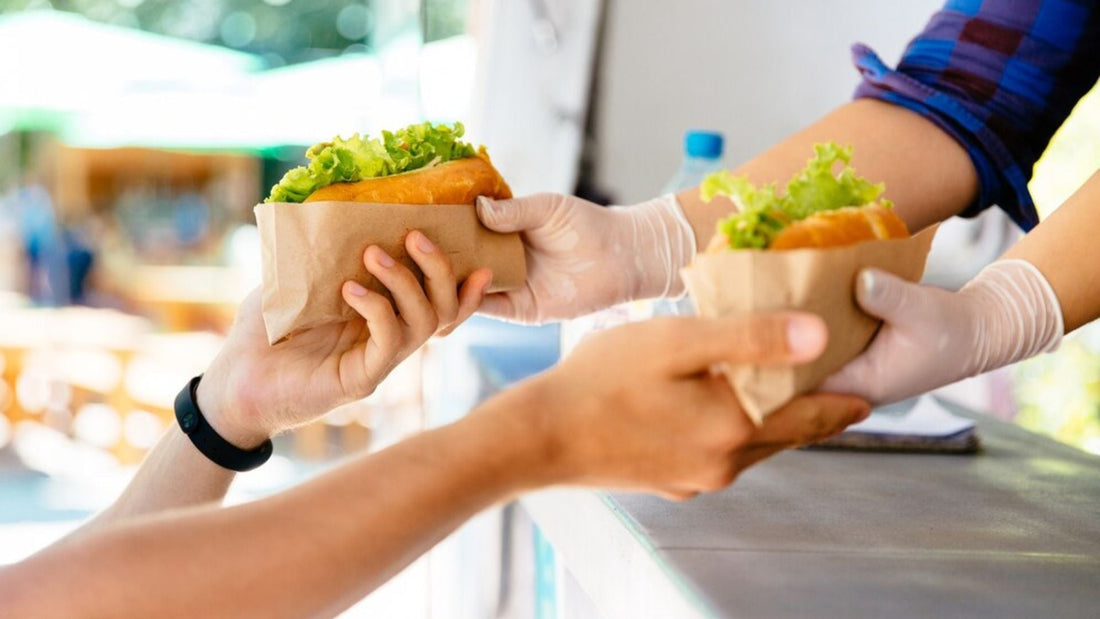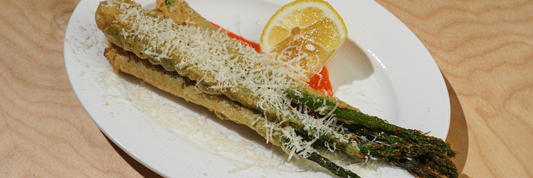Just as popular as plastic sandwich bags, wax paper sandwich bags are a packaging chosen by many fast-food restaurants, takeaways, or cafeterias. So, what is special about wax paper sandwich bags? What need to consider when choosing wax paper sandwich bags? In the article below, let's find out more details.
- Paper bags used to store food
- Is Acid-Free Tissue Paper Better than Regular Paper for your Food Business?
-
What is Wax Paper? Is Wax Paper The Same As Parchment Paper?
Overview of Wax Paper Sandwich Bags
Wax paper sandwich bags are a disposable packaging type. While they are primarily known for their ability to preserve and protect sandwiches, their versatility extends far beyond this realm. These bags can effectively package a wide array of food items, including snacks and baked goods, thanks to their unique characteristics.
Kraft Paper Bakery Bags l For Sandwich, Cookie, Pastry, Food, Snack
Material
- Base paper: The foundation of the bag is typically made from natural wood pulp, resulting in a thin, lightweight paper. This paper is often unbleached, giving it a translucent white or light brown color.
- Wax coating: A thin layer of wax is applied to the paper, creating a moisture barrier and enhancing grease resistance. This wax coating can be made from paraffin wax (petroleum-based) or vegetable wax (soy or beeswax). Vegetable wax options are becoming increasingly popular due to their eco-friendly nature.
Sizes
Wax paper sandwich bags come in various sizes to accommodate different needs. Here are the most common ones:
- Standard size: This is the most popular size, measuring around 6 x 8 inches (15 x 20 cm). It's perfect for packing most sandwiches, wraps, or burgers.
- Jumbo size: A larger option, typically around 8 x 10 inches (20 x 25 cm), suitable for oversized sandwiches, hoagies, or bakery items like baguettes.
- Snack bag size: Smaller versions measuring around 4 x 6 inches (10 x 15 cm) are ideal for individual cookies, candies, or small snacks.
Design
While the basic design is a simple bag with one open end, there are some variations of wax paper bas for sandwiches:
- Plain: The most common option is a basic brown paper with no printing.
- Custom printed: These bags feature logos, designs, or information printed on them for branding purposes. Popular in cafes, bakeries, or catering services.
- Windowed: A small, clear window allows customers to see the contents of the bag without opening it. Useful for showcasing bakery items or pre-made sandwiches.
In addition, wax paper bags for sandwiches are designed with 2 different opening, including:
- Single opening: The most common style with one open end that folds shut.
- Double opening: This bag opens from both sides, making it easier to fill and access contents.
Properties
- Moisture resistance: The wax coating creates a barrier against moisture, preventing soggy sandwiches and protecting baked goods from drying out.
- Grease resistance: The wax helps prevent greasy foods from soaking through the bag and keeps hands clean.
- Food safe: The wax coating and paper are typically food safe, making them suitable for direct contact with food items.
- Biodegradable: Both the paper and vegetable-based wax coatings are biodegradable, making them an eco-friendlier option compared to plastic bags. (Paraffin wax can take longer to decompose.)
- Lightweight and disposable: They are lightweight and contribute minimal weight to take-out meals. As disposable bags, they eliminate the need for washing and reusing.
Overall, with all these properties, wax paper sandwich bags have emerged as a prevalent choice among various food establishments, including restaurants, takeaways, and even bakeries.

Should Your Business Choose Wax Paper Sandwich Bags over Plastic Bags?
With the features above, wax paper bags for sandwiches are one of the common options for food business. But which is better to choose when it comes to sandwich bags? Wax paper or plastic sandwich bags? Let’s compare two of them and choose the suitable one for your business.
Comparison between Sandwich Bags and Plastic bags
Both wax paper and plastic sandwich bags share some key features that make them popular choices in the food industry:
- Convenience: Lightweight, portable, and easy to use for packaging sandwiches, wraps, snacks, and bakery items.
- Disposable: Designed for single-use applications, offering a convenient way to grab-and-go.
- Branding Potential: Both types can be custom printed with logos or designs for brand recognition and marketing.
But they have distinguished things, here is a table showing the differences between these two kinds of bags:
|
Criteria |
Wax Paper |
Plastic |
|
Material |
Paper coated with wax (paraffin or vegetable-based) |
Made from various types of plastic (e.g., polyethylene) |
|
Eco-Friendliness |
More eco-friendly, especially with vegetable-based wax and if recyclable programs accept them. |
Less eco-friendly, typically not recyclable, and contributes to plastic pollution. |
|
Cost |
Generally, more affordable, especially for non-custom options. |
Costs can vary depending on thickness, features, and customization. |
|
Food Preservation |
Offers moderate moisture resistance, good for short-term storage. |
Superior barrier against moisture and air, ideal for longer shelf life or greasy/moist foods. |
|
Heat Resistance |
Not heat resistant, cannot be microwaved. |
Some types are heat resistant and microwave-safe. |
|
Strength |
Limited strength, might tear with heavy or bulky items. |
Generally stronger and more tear-resistant. |
|
Moisture Control |
Breathability allows some moisture release, preventing soggy sandwiches. |
Can trap moisture if not breathable, leading to soggy food. |
|
Disposability |
Disposes easily but contributes to landfill waste if not recycled. |
Disposes easily but less eco-friendly due to lower recyclability. |
Better Choice for Your Business
Choosing the right sandwich bag for your food business is more than just aesthetics; it's a strategic decision impacting functionality, sustainability, cost, and customer experience.
The best option for you depends heavily on your specific needs and priorities. Consider the following factors:
- Sustainability: If eco-friendliness is a key concern, choose wax paper, especially with vegetable-based wax. This aligns with the growing emphasis on responsible packaging.
- Cost-Effectiveness: Wax paper is generally more affordable, especially for non-custom printed options. This can be a significant advantage if budget is a major consideration.
- Food Type and Storage Needs:
- Short-Term Storage: Wax paper works well for sandwiches, wraps, and baked goods for short durations.
- Longer Shelf Life or Greasy Foods: Plastic offers better protection against moisture and air, ideal for greasy or moist foods, or items requiring longer storage.
- Heat Resistance: If microwaving is a necessity for some items, plastic is the only option.
- Sogginess Concerns: If preventing soggy sandwiches is a priority, wax paper's breathability allows some moisture release.
Businesses can use both wax paper and plastic sandwich bags depending on their specific needs and preferences.
Conclusion
In summary, wax paper sandwich bags are disposable products with a variety of designs, sizes, and features that are suitable for a wide range of food businesses. When choosing between wax paper and plastic sandwich bags, carefully consider the specific strengths and limitations of each type to align with the needs of your business.





